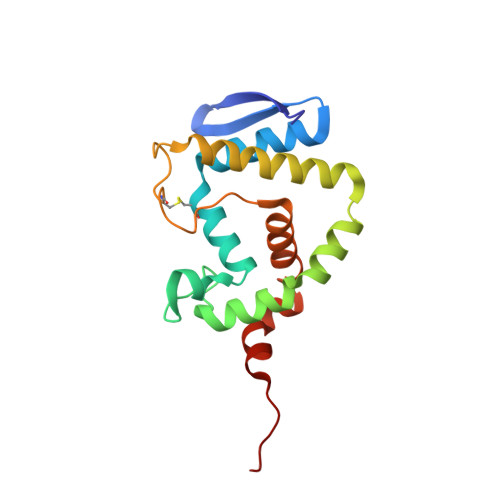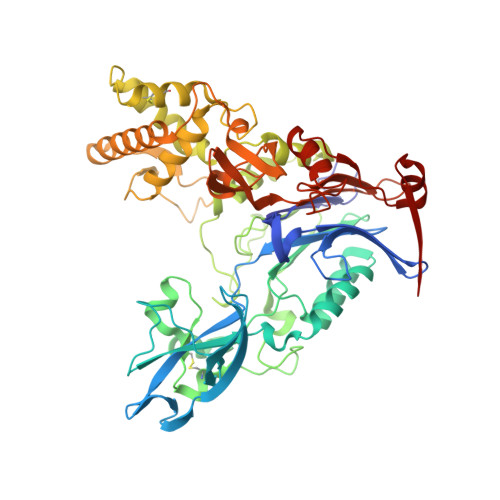Structural Characterization and High-Throughput Screening of Inhibitors of PvdQ, an NTN Hydrolase Involved in Pyoverdine Synthesis.
Drake, E.J., Gulick, A.M.(2011) ACS Chem Biol 6: 1277-1286
- PubMed: 21892836
- DOI: https://doi.org/10.1021/cb2002973
- Primary Citation of Related Structures:
3L91, 3L94, 3SRA, 3SRB, 3SRC - PubMed Abstract:
The human pathogen Pseudomonas aeruginosa produces a variety of virulence factors including pyoverdine, a nonribosomally produced peptide siderophore. The maturation pathway of the pyoverdine peptide is complex and provides a unique target for inhibition. Within the pyoverdine biosynthetic cluster is a periplasmic hydrolase, PvdQ, that is required for pyoverdine production. However, the precise role of PvdQ in the maturation pathway has not been biochemically characterized. We demonstrate herein that the initial module of the nonribosomal peptide synthetase PvdL adds a myristate moiety to the pyoverdine precursor. We extracted this acylated precursor, called PVDIq, from a pvdQ mutant strain and show that the PvdQ enzyme removes the fatty acid catalyzing one of the final steps in pyoverdine maturation. Incubation of PVDIq with crystals of PvdQ allowed us to capture the acylated enzyme and confirm through structural studies the chemical composition of the incorporated acyl chain. Finally, because inhibition of siderophore synthesis has been identified as a potential antibiotic strategy, we developed a high-throughput screening assay and tested a small chemical library for compounds that inhibit PvdQ activity. Two compounds that block PvdQ have been identified, and their binding within the fatty acid binding pocket was structurally characterized.
Organizational Affiliation:
Hauptman-Woodward Medical Research Institute and Department of Structural Biology, State University of New York at Buffalo, 700 Ellicott Street, Buffalo, New York 14203-1102, United States.


















